- Events & Programs Home
- Calendar
- Accessibility
- Adults
-
Families & Teens
- Families & Teens Home
- 10x10 Teen Art Expo
- Art on the Rise
- Art Together: Art Making for Families with Children Ages 3–5
- Babies Sing with May Festival Minis
- Boy Scouts / Girl Scouts
- CAM Kids Day
- Family Storytime and Gallery Walk
- Family Studio: Art Making for Families with Children Ages 6–12
- Games in the Galleries
- Members-Only Baby Tours
- Public Baby Tours
- REC Reads
- Rosenthal Education Center (REC)
- Saturday Morning Art Class
- See Play Learn Kits
- Summer Camp
- Teen Fest: Zine and Comic Exchange
- RECreate
- Teachers
- Community Outreach
- Fundraisers
- Plan Your Own Event

- Events & Programs Home
- Calendar
- Accessibility
- Adults
-
Families & Teens
- Families & Teens Home
- 10x10 Teen Art Expo
- Art on the Rise
- Art Together: Art Making for Families with Children Ages 3–5
- Babies Sing with May Festival Minis
- Boy Scouts / Girl Scouts
- CAM Kids Day
- Family Storytime and Gallery Walk
- Family Studio: Art Making for Families with Children Ages 6–12
- Games in the Galleries
- Members-Only Baby Tours
- Public Baby Tours
- REC Reads
- Rosenthal Education Center (REC)
- Saturday Morning Art Class
- See Play Learn Kits
- Summer Camp
- Teen Fest: Zine and Comic Exchange
- RECreate
- Teachers
- Community Outreach
- Fundraisers
- Plan Your Own Event
Blog: CAM Uncovered
Blog: CAM Uncovered
- Home
- Plan Your Visit
- Art
-
Events & Programs
- Events & Programs Home
- Calendar
- Accessibility
- Adults
-
Families & Teens
- Families & Teens Home
- 10x10 Teen Art Expo
- Art on the Rise
- Art Together: Art Making for Families with Children Ages 3–5
- Babies Sing with May Festival Minis
- Boy Scouts / Girl Scouts
- CAM Kids Day
- Family Storytime and Gallery Walk
- Family Studio: Art Making for Families with Children Ages 6–12
- Games in the Galleries
- Members-Only Baby Tours
- Public Baby Tours
- REC Reads
- Rosenthal Education Center (REC)
- Saturday Morning Art Class
- See Play Learn Kits
- Summer Camp
- Teen Fest: Zine and Comic Exchange
- RECreate
- Teachers
- Community Outreach
- Fundraisers
- Plan Your Own Event
- Give & Join
- About
- Tickets
- Calendar
- Exhibitions
- Collections
- Blog
- Shop
The Power of Art: Celebrating Our Humanity – SketchCAM
by Bruce Petrie, President, Board of Trustees
9/4/2024
Sketching , SketchCAM , Pinocchio , Jim Dine , Pinocchio (Emotional) , outdoor sculpture , sculpture
Hi and welcome to the Cincinnati Art Museum and SketchCAM.
I’m Bruce Petrie, current President of the museum’s board.
SketchCAM is a quick sketch showing how the museum’s mission and art work together. Our mission: Through the power of art, we contribute to a more vibrant Cincinnati by inspiring its people and connecting our communities.
So why not start at the entrance with a 12-foot-tall sculpture by Cincinnati artist Jim Dine titled Pinocchio (Emotional) (2007).
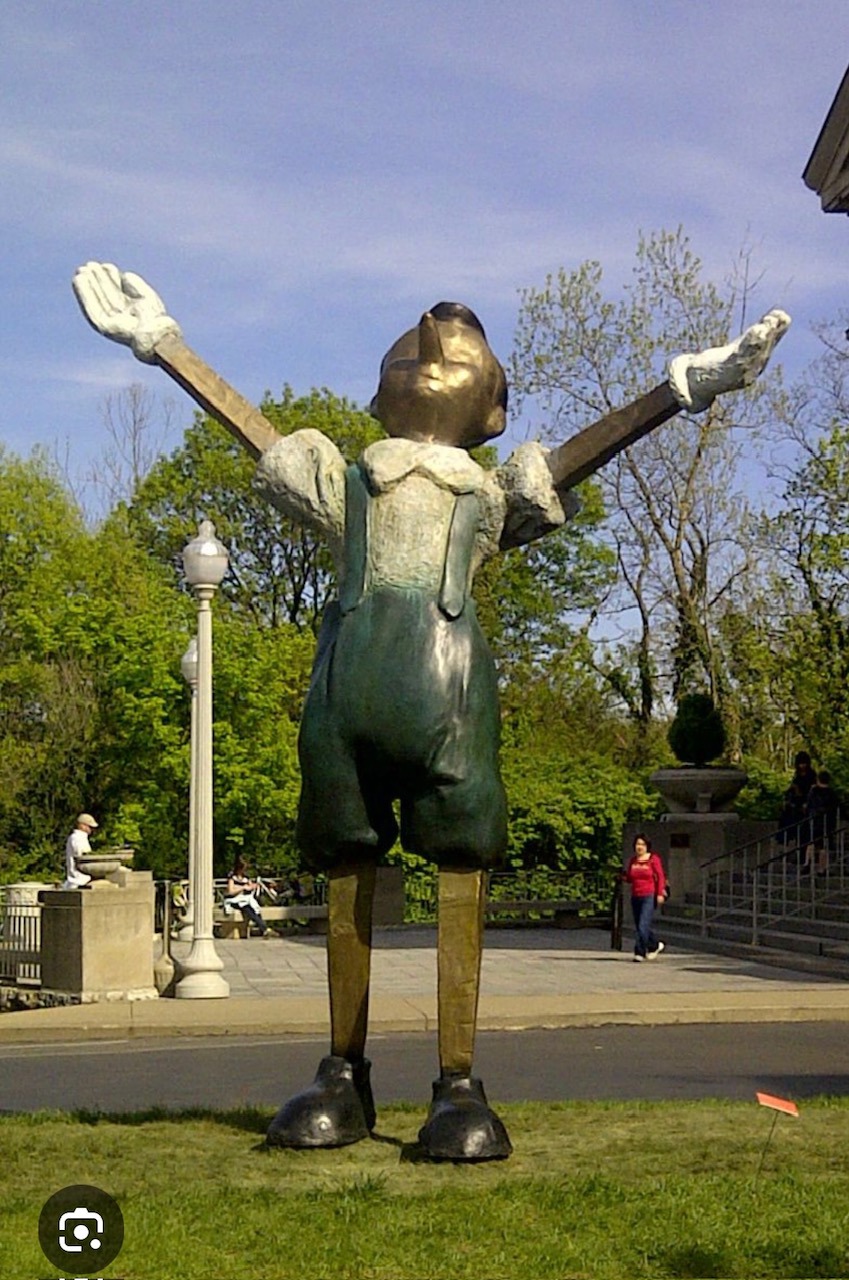
We all know the Pinocchio story, right? A wooden puppet becomes a real person but only after experiencing life. Jim Dine titled his sculpture not just Pinocchio but Pinocchio (Emotional), suggesting that human experience.
Art welcomes us into this place: a museum. But it also says, with outstretched arms, ”Your aliveness, your emotions, your imaginations are welcome here.”
Art reminds us, ”Hey we’re not wooden; we’re real live people.”
Now, you may think, well that’s obvious. But art says, “Wait, is it so obvious? Do we really see each other?” Have you ever walked down a busy sidewalk and noticed how many people are looking at their phones? Do we see the person who checks out our groceries or empties our trash cans?
So, here, art reminds us to look up and see each other. Can we be amazed by people, just like we’re amazed at seeing a giant Pinocchio?
Let’s look closer at seeing like an artist, which everyone can do. I like to bring a sketchbook and pencil to the museum, because when you draw something, you really get to know and see it.
Really seeing something includes three things that give us clues to what the artwork is saying, its meaning. The three things to look for are gesture, form, and line.
Gesture
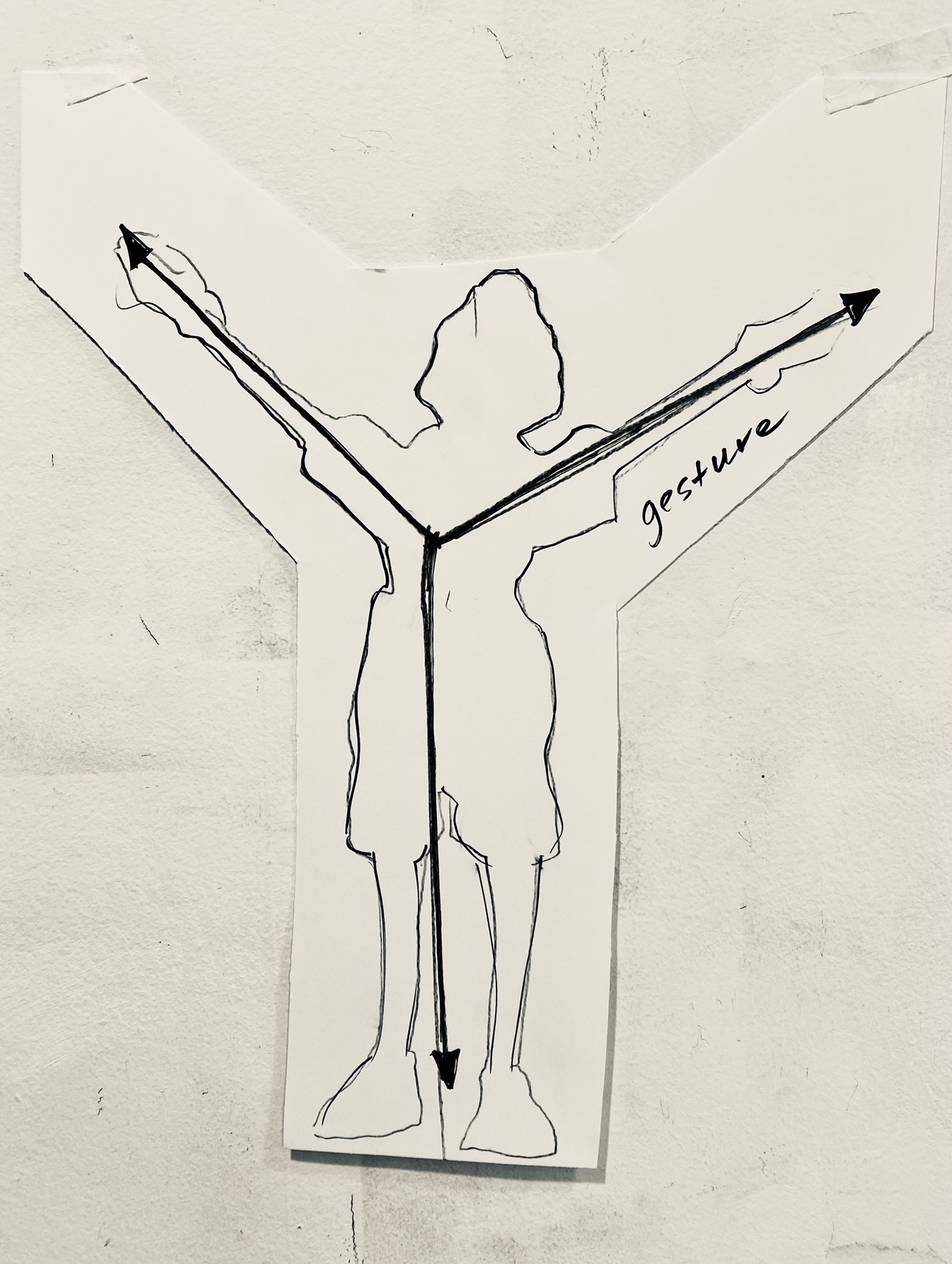
To see gesture, just ask yourself, “What is the main body movement and what emotion is it conveying?” Your brain is already wired to read all sorts of gestures, right? We start a drawing with quick gestural marks so our brains click into the emotions we want to convey. Pinocchio’s gesture is a celebration, arms skyward, a big Y shape like the song ”YMCA.” But what if Pinocchio had his arms crossed? Not so welcoming. What emotions do gestures create in you?
Form
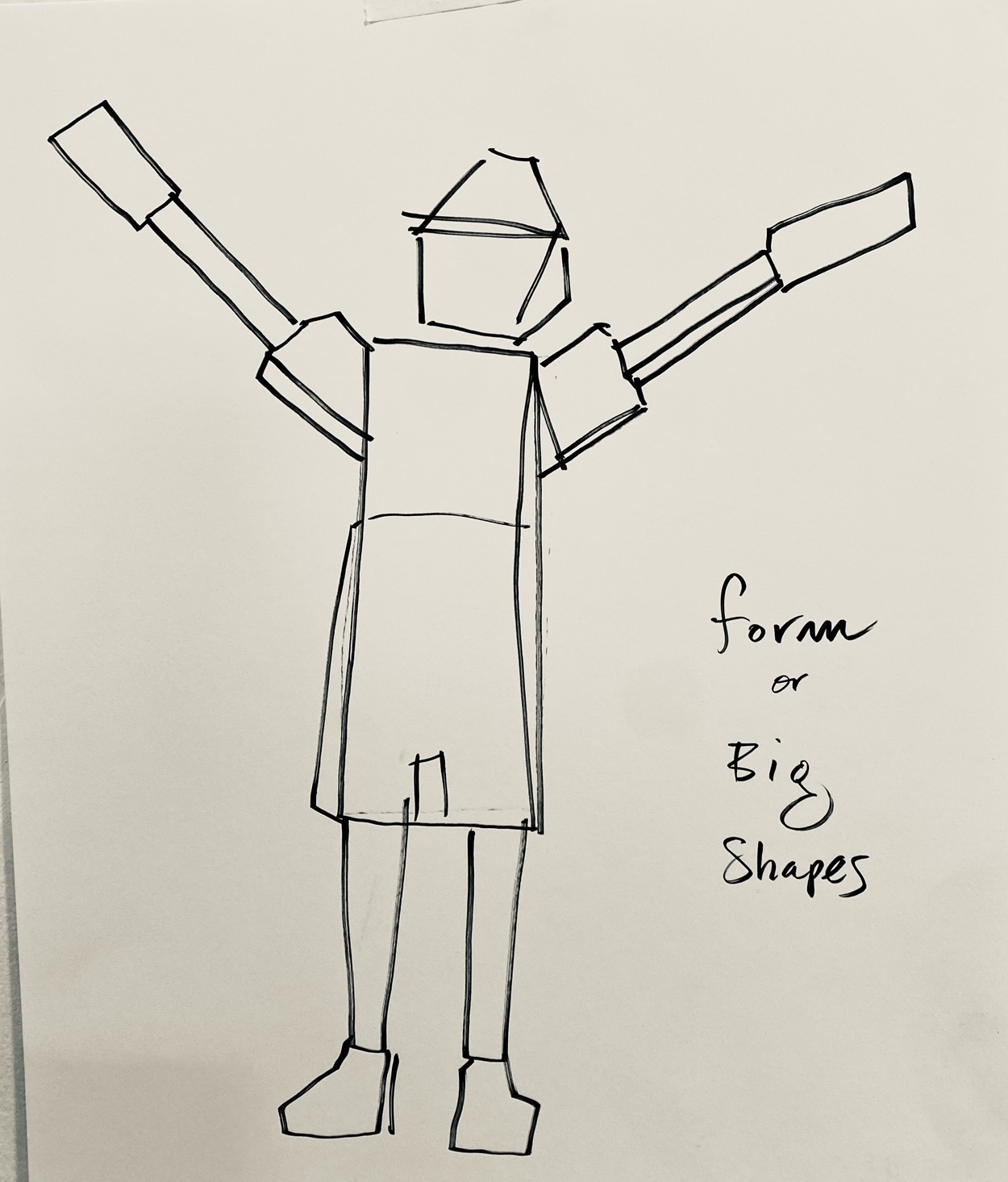
To see form, ask yourself, “What are the biggest most basic shapes and how are they arranged and balanced?” Pinocchio’s form as sculpture comprise a bunch of building blocks balanced on top of each other. Pinocchio is doing a big stretch, but he doesn’t fall over. Forms make a balanced composition.
Line
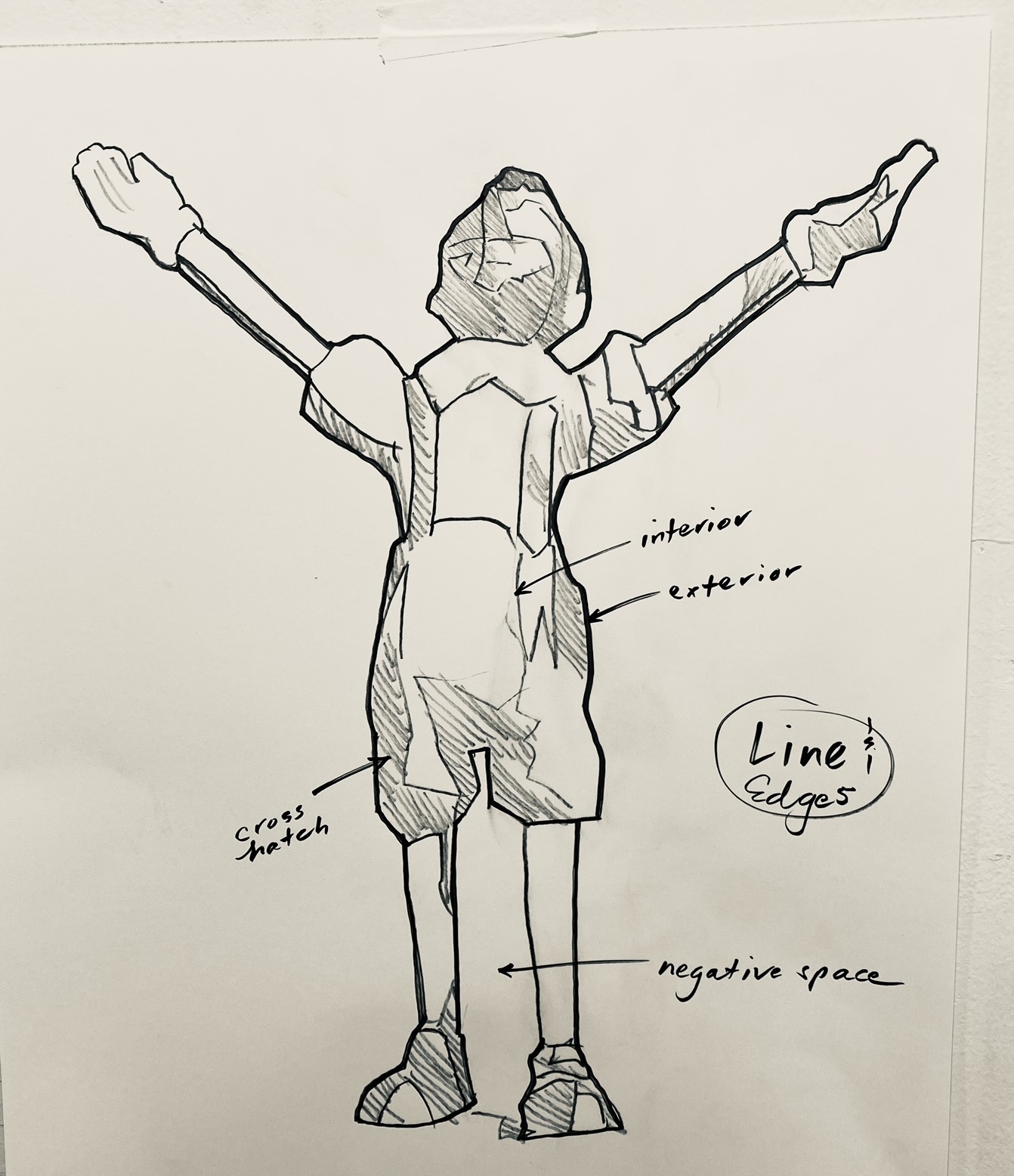
To see line, also called edge, imagine and follow with your eyes a bug, an ant—yes, an imaginary ant—making a path around the outer edge. Edges, sometimes sharp and sometimes not, help define form and gesture. Pinocchio’s outside edges mark a boundary line between form and sky. Pinocchio’s inside edges are where shadow meets light. As Leonardo DaVinci’s drawings teach us, line hatching can define shadows. Lines also define negative spaces outside the form.
In Pinocchio, the artist reflects the power of art using gesture, form, and line to welcome and connect us with a popular tale of transformation to celebrate our common humanity. It reminds us, especially in these times of powerful tech, robotics, and AI, that we’re not objects. We’re alive!
Thanks and hope to see you alive and well at the Cincinnati Art Museum!
Related Blog Posts

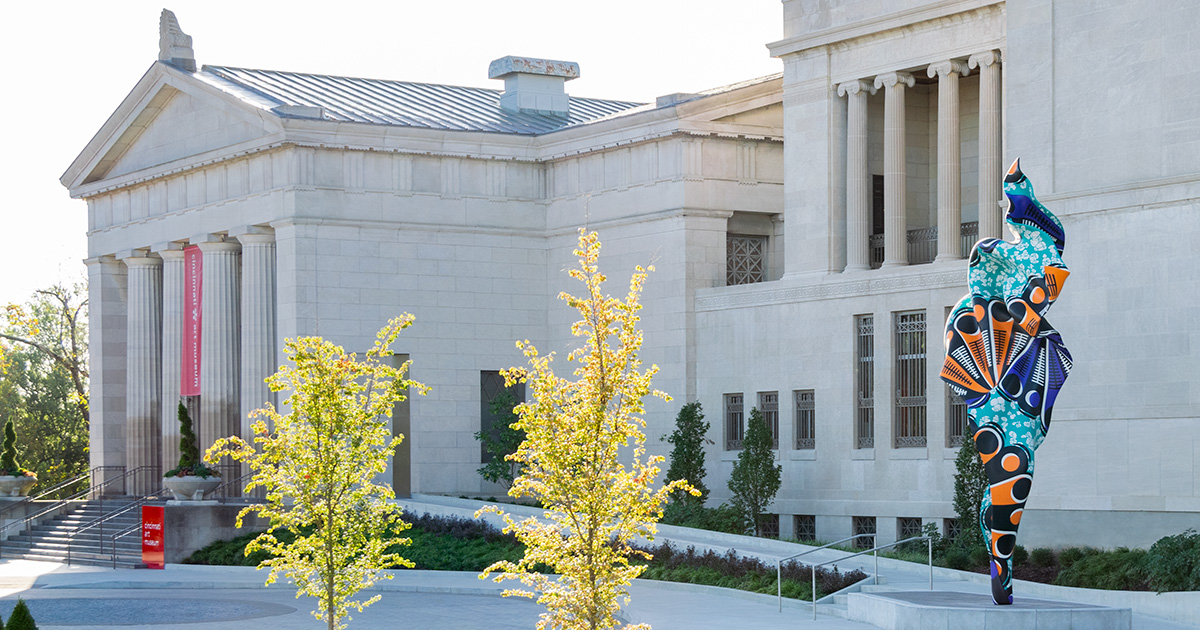

Cincinnati, OH 45202
Toll Free: 1 (877) 472-4226
Museum Hours
Museum Shop
Terrace Café
Library
Cincinnati Art Museum is supported by the tens of thousands of people who give generously to the annual ArtsWave Campaign, the region's primary source for arts funding.

Free general admission to the Cincinnati Art Museum is made possible by a gift from the Rosenthal Family Foundation. Exhibition pricing may vary. Parking at the Cincinnati Art Museum is free.
Generous support for our extended Thursday hours is provided by Art Bridges Foundation’s Access for All program.

General operating support provided by:



